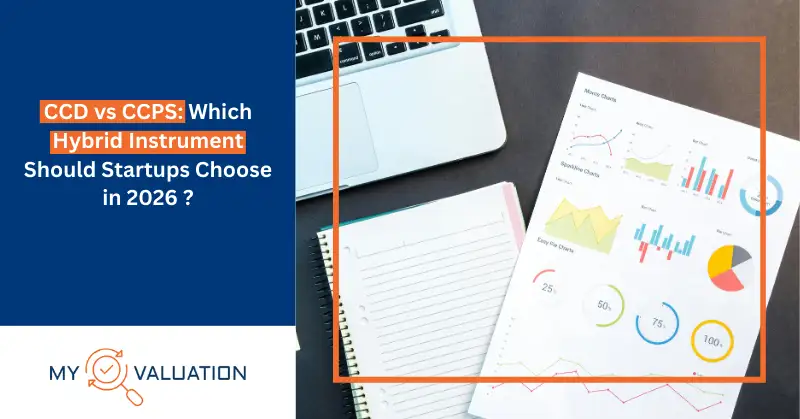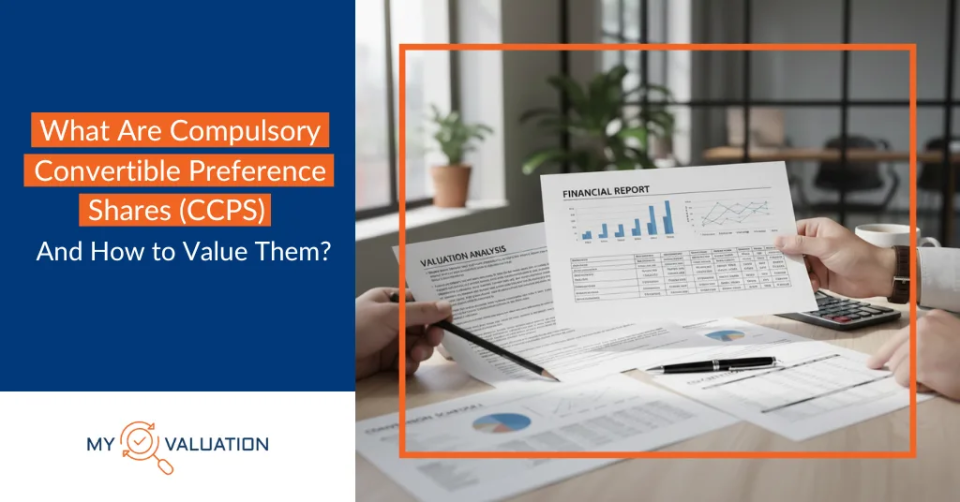In today's knowledge economy, intangible assets often represent the core drivers of enterprise value. Patents, trademarks, and customer relationships may not appear on a traditional balance sheet, but they play a central role in generating revenue and sustaining competitive advantage.
But how do you put a figure on these invisible assets? Valuing intangible assets accurately is critical for mergers, fundraising, compliance, or intellectual property management.
The Relief from Royalty Method offers a practical answer to the question: “What would we pay if we didn’t own these assets and had to license them instead?”
In this blog, we’ll walk you through how the Relief from Royalty Method helps assign credible value to patents, trademarks, and customer relationships.
What is the Relief from Royalty Method?
The Relief from Royalty (RFR) method is based on a straightforward yet powerful concept: if a business owns an intangible asset, it avoids paying royalties to use it. This hypothetical “relief” from paying ongoing license fees becomes the foundation of the asset’s value.
Imagine your business didn’t own a trademark, patent, or customer list. What would you pay annually to license it? That avoided cost forms the basis of your valuation.
This method stands out because it:
- Ties valuation directly to the revenue the asset helps generate
- Leverages observable royalty rate data
- Reflects real-world licensing models
- Provides a defendable, audit-friendly valuation backed by market behavior
When Should You Use the Relief from Royalty Method?
The RFR method is most suitable when:
- The asset could reasonably be licensed to others
- Market data exists for similar licensing arrangements
- The asset supports clear and identifiable revenue streams
This makes it an effective method in contexts like:
- Mergers and acquisitions
- Purchase price allocations
- Tax planning
- Litigation and damages analysis
- Financial reporting
It’s particularly relevant when valuing assets that generate predictable income, such as product-based patents or customer contracts with recurring revenue.
Key Steps in the Relief from Royalty Valuation Process
Step 1: Identify Comparable Royalty Rates
The foundation of this method lies in selecting reliable royalty rates. Ask yourself: What would I pay to license this asset from a third party?
Sources to find relevant royalty rates include:
| Source | Best For | Considerations |
|---|---|---|
| RoyaltyStat | Patents, technology | Subscription required, robust data sets |
| ktMINE | Trademarks, brands | Industry-specific licensing info |
| License agreements | Peer companies | May need adjustments for context |
| Industry surveys | General benchmarks | Less specific but helpful for trends |
| Court cases | Litigation scenarios | Publicly available precedents |
When reviewing royalty rates:
- Ensure industry and geography alignment
- Note any bundled services included
- Check for exclusivity or usage limits
Build a range of rates, not a single figure, and be prepared to explain the rationale behind your selection.
Step 2: Forecast Revenue Attributable to the Asset
Determine the revenue directly linked to the asset over its expected useful life. Key questions include:
- How much product revenue ties back to the patent?
- What brand recognition is driven by the trademark?
- How much repeat business comes from key customer relationships?
For different assets:
- Patents: Focus on revenue from protected products or services and consider legal life and obsolescence risk.
- Trademarks: Assess brand equity, customer loyalty, and pricing advantages.
- Customer relationships: Examine retention, historical spending, and growth potential.
Ensure that revenue attribution is specific, well-reasoned, and grounded in historical or forecast data.
Step 3: Apply the Royalty Rate to Projected Revenue
Now multiply projected revenues by your selected royalty rate to calculate the annual “relief” amount.
Formula:
Annual Relief = Revenue × Royalty Rate
Example:
INR 10,000,000 revenue × 5% royalty = INR 500,000
Perform this calculation for each year of the asset’s useful life.
Step 4: Apply Tax Benefits
Royalty payments are typically tax-deductible, so you must adjust your valuation to reflect after-tax benefits.
Formula:
After-Tax Relief = Annual Relief × (1 - Tax Rate)
Example (25% tax rate):
INR 500,000 × (1 - 0.25) = INR 375,000
This adjustment gives a more realistic picture of the economic value retained.
Step 5: Discount to Present Value
Future benefits must be discounted to present value. Use a suitable discount rate—often the company's WACC, adjusted for asset-specific risks.
Formula:
PV = Cash Flow ÷ (1 + Discount Rate)^Year
The greater the uncertainty or risk, the higher the discount rate—and the lower the present value.
Step 6: Calculate Terminal Value (If Applicable)
If the asset has an indefinite life (like a trademark or long-term customer list), calculate terminal value.
Formula:
Terminal Value = Final Year Cash Flow × (1 + Growth Rate) ÷ (Discount Rate - Growth Rate)
Use conservative growth rates to avoid inflated values.
How to Value Patents Using Relief from Royalty
Patents present unique valuation challenges due to their technical nature and limited lifespan. When applying the RFR method to patents:
Consider the remaining legal protection
Patents usually have 20 years of protection from filing, but your valuation must account for the time already passed.
Assess technological obsolescence risk
Will the technology remain relevant for the patent's legal life? Market disruption can make patents worthless before they expire.
Evaluate enforcement strength
A patent's value depends partly on your ability and willingness to defend it against infringement. Patents are complex to value due to limited legal life and technology risks. When applying the RFR method:
- Consider remaining protection period
- Assess risk of obsolescence
- Factor in enforcement capabilities
Royalty rates vary:
- Standard innovations: 1-5%
- Breakthrough tech: 8-15%+
Example:
INR 5M revenue × 6% royalty over 12 years, discounted at 15%, with a 25% tax rate → Patent value ≈ INR 1.5M – INR 1.8M
How to Value Trademarks Using Relief from Royalty
Trademarks and brands often have indefinite useful lives with proper maintenance, making them particularly valuable. Key considerations include:
Brand strength assessment
Stronger brands command higher royalty rates. Consider recognition, loyalty, and price premiums.
Industry-specific benchmarks
Royalty rates vary significantly by industry, from 1-2% in some manufacturing sectors to 8-15% for luxury goods.
Geographic coverage
Global brands with protection in multiple markets generally command higher values.
Trademarks can have indefinite lives and long-term brand equity. Consider:
- Brand recognition and loyalty
- Premium pricing ability
- Industry norms
Typical royalty ranges:
- Consumer goods: 1-5%
- Retail: 3-7%
- Tech: 2-5%
- Luxury: 7-15%
Strong brands can hold or increase value for decades with proper protection.
How to Value Customer Relationships Using Relief from Royalty
Customer relationships represent perhaps the most challenging application of the RFR method, as they're rarely licensed independently. However, with creative analysis, you can still apply the method by:
1. Examining CRM software licensing
What would you pay for a comparable customer database?
2. Analyzing customer acquisition costs
How much would it cost to rebuild these relationships?
3. Considering customer lifetime value
What's the present value of future revenue from existing relationships?
Customer relationships are tricky, but not impossible to value. Try this approach:
- Consider the cost to rebuild relationships (acquisition cost)
- Estimate customer lifetime value
- Examine CRM licensing models as proxies
Metrics to track include:
- Retention rates
- Revenue per customer
- Cost to acquire new customers
- Cross-sell potential
Royalty rates typically fall between 0.5% and 3% depending on stickiness and switching costs.
Limitations and Considerations
While powerful, the Relief from Royalty method has several limitations to keep in mind:
Finding truly comparable royalty rates can be difficult
Market data may be scarce or not perfectly aligned with your specific asset.
Revenue attribution challenges
Isolating exactly how much revenue comes from a specific intangible asset involves judgment.
Circular reasoning risk
The method assumes the asset could be licensed at market rates, which isn't always true.
Tax implications vary by jurisdiction
The tax treatment of hypothetical royalties must reflect your specific tax situation.
Best practice: Validate RFR findings with alternate valuation methods like:
- Multi-period excess earnings method
- Replacement cost method
- Market approach (comparable transactions)
Real-World Applications and Case Studies
1. Tech Startup Acquisition
When a large software company acquired a startup with valuable patents, they used the RFR method to allocate INR 12 million of the purchase price to intellectual property. By identifying comparable licensing deals in the enterprise software space, they justified a 7% royalty rate on projected revenue from the patented technology.
2. Brand Valuation for Licensing
A consumer products company needed to establish a baseline value for international licensing negotiations. Using the RFR method with industry benchmarks of 4-6% royalty rates, they determined their brand was worth approximately INR 45 million, providing leverage in licensing discussions.
3. Litigation Support
In an intellectual property dispute, the RFR method helped quantify damages by calculating what the defendant would have paid in reasonable royalties had they properly licensed the technology. This created a defensible position based on actual market licensing practices.
How to Overcome Common Valuation Challenges
When applying the Relief from Royalty method, you may encounter these common challenges:
1. Limited comparable data
Expand your search to adjacent industries or similar technologies, then adjust rates for specificity.
2. Uncertain future revenue
Develop multiple scenarios (base, optimistic, pessimistic) and probability-weight the outcomes.
3. Determining appropriate discount rates
Build up from risk-free rates, adding premiums for specific risks associated with the asset.
4. Defending subjective inputs
Document all assumptions thoroughly and test sensitivity to changes in key variables.
Conclusion
The Relief from Royalty method offers a structured, market-informed way to value intangible assets like patents, trademarks, and customer relationships.
It’s a preferred method in purchase price allocations, IP transactions, and financial reporting because of its balance of logic, market data, and defensibility.
Remember:
- Use reliable and relevant royalty rate sources
- Forecast revenues conservatively
- Adjust for taxes and risk
- Discount appropriately
- Always document your assumptions
By leveraging this method, you bring clarity to the invisible—turning intellectual property into actionable value for decision-making.
At My Valuation, we specialize in applying the Relief from Royalty method with precision and credibility. Let us help you quantify the true value of your IP portfolio.




